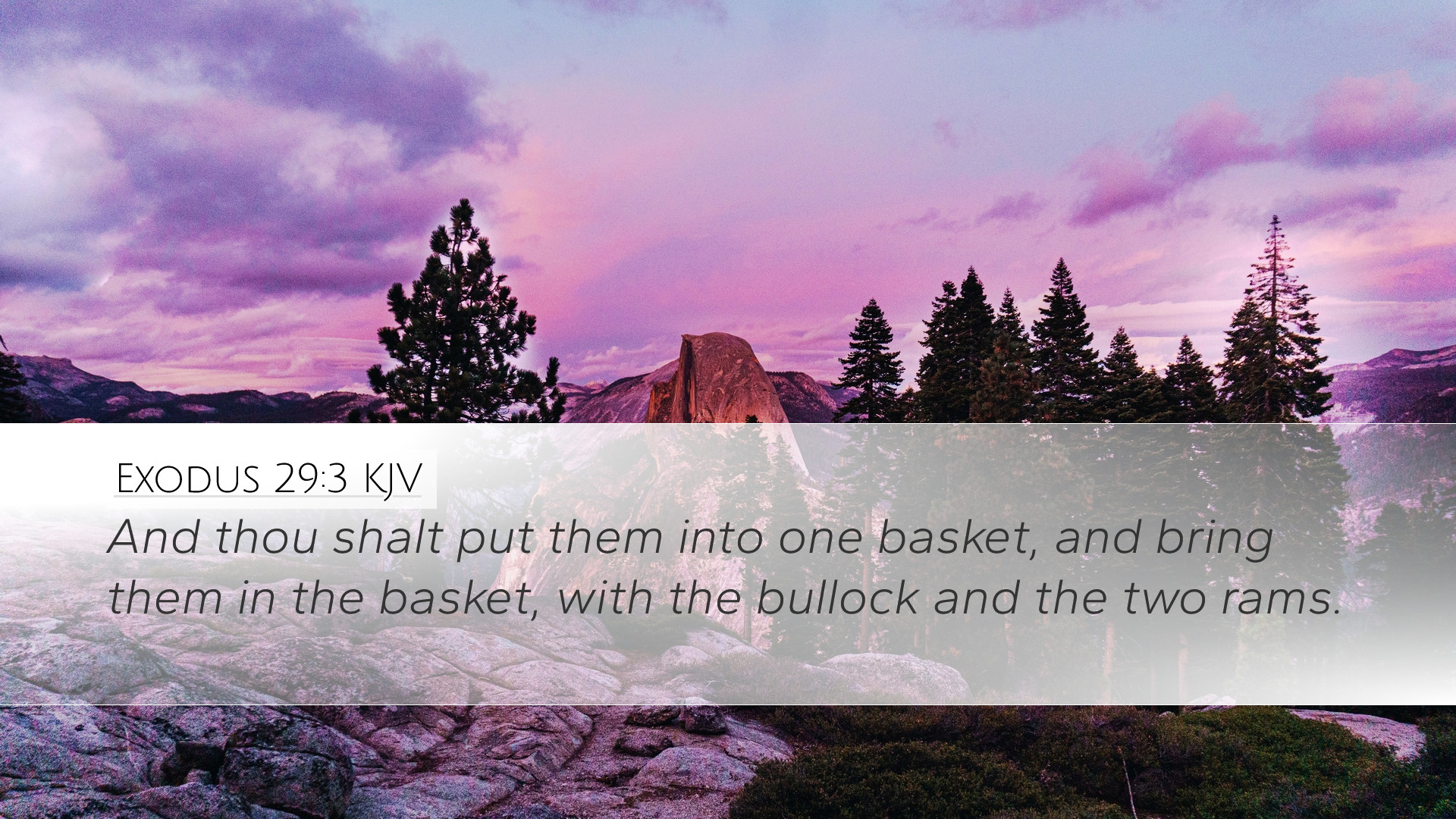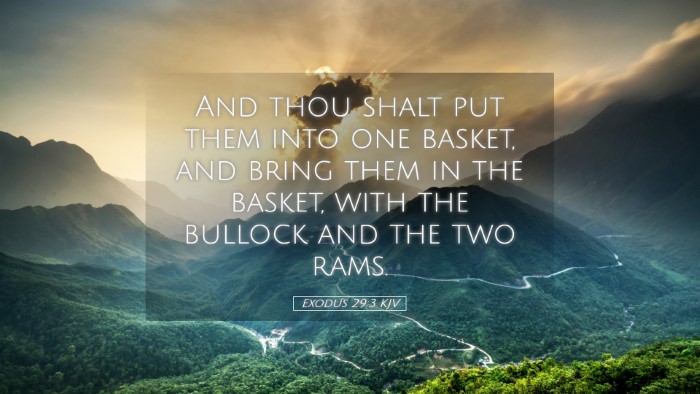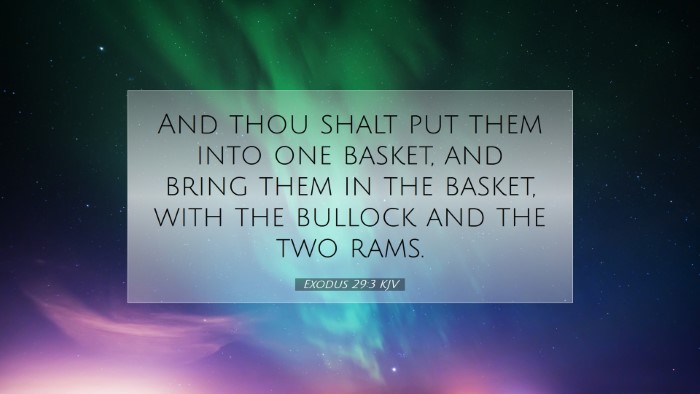Commentary on Exodus 29:3
Bible Verse: Exodus 29:3 - "And you shall put them into one basket, and bring them in the basket, with the bull and the two rams."
Introduction
This passage from Exodus 29 speaks to the ceremonial process of the consecration of priests, specifically Aaron and his sons, as they are set apart for service unto the Lord. This pivotal moment in Israelite worship foreshadows greater truths about sacrifice, atonement, and the holiness required to stand before God.
The Significance of the Offerings
Matthew Henry emphasizes that the offerings listed here are symbolic acts of dedication. Each animal represents significant aspects of worship and atonement. The bull signifies the urgent need for atonement for sin, while the rams represent voluntary offerings of worship and dedication. Together, they illustrate the comprehensive nature of atonement and dedication that God requires from His ministers.
Albert Barnes draws attention to the requirement of bringing the animals in a single basket, which signifies unity in the act of worship. This unity underlines a key theme throughout Scripture—the call to the community of believers to present themselves collectively in faith before God.
Types of Offerings
- Bull: Acknowledgment of sin and need for atonement.
- Rams: A symbol of dedication and service to God.
The Basket: Symbolism of Sacrifice
Adam Clarke interprets the basket as a significant vessel containing the offerings, illustrating how all that is presented to God should be done through a medium of holiness and readiness. The basket itself might represent the church as a vessel that collects the offerings of its members, exemplifying the corporate nature of worship.
Consecration Process
The act of collecting these sacrificial animals into one basket is an essential step in the consecration ritual. This process of collection not only depicts the gathering of sins and offenses (symbolized by the bull) but also gathers the hearts of the worshippers in a singular focus on God. Each participant in this ceremony was reminded of the seriousness of their devotion and calling.
Interpreting the Call for Holiness
As pastors and theologians, it is vital to understand that this act of bringing the offerings is not merely ritualistic but points to a deeper relationship with God characterized by holiness and separation from sin. Henry’s commentary notes that the sacrificial system culminates in Christ, the ultimate sacrifice who fulfills all sacrificial roles, allowing believers today to approach the throne of grace with confidence.
Holiness and Service
Albert Barnes states that holiness is a prerequisite for service, indicating that anyone wishing to serve God must first understand the severity of sin and the necessity of atonement. This theme resonates throughout the entirety of Scripture, culminating in the New Testament doctrine of believers being a royal priesthood, set apart for holy service.
Applications for Today
In contemporary worship settings, this passage invites reflection on how we approach God with our offerings. It calls for leaders and congregants alike to evaluate their spiritual condition and readiness to serve.
- Embrace Holiness: Churches must promote a culture of holiness and purity in worship. Just as the priests had to prepare themselves, today’s leaders should also prepare their hearts and congregations.
- Unity in Worship: The symbolism of the basket invites community and togetherness in our spiritual offerings. As a body, unity in purpose and devotion to God is paramount.
- Understand Atonement: Acknowledge the weight of sin and the grace offered through Christ. Leaders should preach the full counsel of God regarding sin, grace, and redemption.
Conclusion
Exodus 29:3 serves as a foundational verse that intertwines the themes of sacrifice, holiness, and communal worship, laying the groundwork for the understanding of the priesthood in the Old Testament. The insights derived from public domain commentaries not only illuminate the historical and theological significance of the verse but also challenge present-day believers to engage in a life of holiness and service. As those called to be priests unto God, may we approach Him with our offerings, understanding the cost, grace, and commitment involved.


